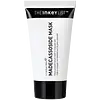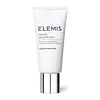What's inside
What's inside
 Key Ingredients
Key Ingredients

 Benefits
Benefits

 Concerns
Concerns

 Ingredients Side-by-side
Ingredients Side-by-side

Water
Skin ConditioningCaprylic/Capric Triglyceride
MaskingCetearyl Alcohol
EmollientGlyceryl Stearate Se
EmulsifyingGlycerin
HumectantXanthan Gum
EmulsifyingStearic Acid
CleansingPhenoxyethanol
PreservativeBenzyl Alcohol
PerfumingMadecassoside
AntioxidantInulin
Skin ConditioningSpirulina Platensis Extract
Skin ProtectingMenthol
MaskingTrehalose
HumectantSodium Stearoyl Glutamate
CleansingBisabolol
MaskingEthylhexylglycerin
Skin ConditioningHelianthus Annuus Seed Oil
EmollientDehydroacetic Acid
PreservativeTrisodium Ethylenediamine Disuccinate
Menthyl Lactate
MaskingWithania Somnifera Root Extract
Skin ConditioningSodium Citrate
BufferingSodium Hydroxide
BufferingLecithin
EmollientZingiber Officinale Root Extract
MaskingWater, Caprylic/Capric Triglyceride, Cetearyl Alcohol, Glyceryl Stearate Se, Glycerin, Xanthan Gum, Stearic Acid, Phenoxyethanol, Benzyl Alcohol, Madecassoside, Inulin, Spirulina Platensis Extract, Menthol, Trehalose, Sodium Stearoyl Glutamate, Bisabolol, Ethylhexylglycerin, Helianthus Annuus Seed Oil, Dehydroacetic Acid, Trisodium Ethylenediamine Disuccinate, Menthyl Lactate, Withania Somnifera Root Extract, Sodium Citrate, Sodium Hydroxide, Lecithin, Zingiber Officinale Root Extract
Water
Skin ConditioningPropylene Glycol
HumectantOctyldodecanol
EmollientGlyceryl Stearate Se
EmulsifyingCetearyl Alcohol
EmollientGlycerin
HumectantC12-16 Alcohols
EmollientHelianthus Annuus Seed Oil
EmollientNiacinamide
SmoothingXanthan Gum
EmulsifyingPhenoxyethanol
PreservativePalmitic Acid
EmollientHydrogenated Lecithin
EmulsifyingParfum
MaskingPapain
Skin ConditioningChlorphenesin
AntimicrobialLactis Proteinum
Skin ConditioningAnanas Sativus Fruit Extract
Skin ConditioningSodium Dehydroacetate
PreservativeDisodium EDTA
Porphyridium Cruentum Extract
Skin ConditioningCinnamyl Alcohol
PerfumingFucus Vesiculosus Extract
EmollientCapsicum Annuum Fruit Extract
AntimicrobialTocopherol
AntioxidantCitronellol
PerfumingGeraniol
PerfumingLimonene
PerfumingCitral
PerfumingMentha Arvensis Leaf Oil
MaskingCuminum Cyminum Seed Oil
MaskingWater, Propylene Glycol, Octyldodecanol, Glyceryl Stearate Se, Cetearyl Alcohol, Glycerin, C12-16 Alcohols, Helianthus Annuus Seed Oil, Niacinamide, Xanthan Gum, Phenoxyethanol, Palmitic Acid, Hydrogenated Lecithin, Parfum, Papain, Chlorphenesin, Lactis Proteinum, Ananas Sativus Fruit Extract, Sodium Dehydroacetate, Disodium EDTA, Porphyridium Cruentum Extract, Cinnamyl Alcohol, Fucus Vesiculosus Extract, Capsicum Annuum Fruit Extract, Tocopherol, Citronellol, Geraniol, Limonene, Citral, Mentha Arvensis Leaf Oil, Cuminum Cyminum Seed Oil
Ingredients Explained
These ingredients are found in both products.
Ingredients higher up in an ingredient list are typically present in a larger amount.
Cetearyl alcohol is a mixture of two fatty alcohols: cetyl alcohol and stearyl alcohol. It is mainly used as an emulsifier. Emulsifiers help prevent the separation of oils and products. Due to its composition, it can also be used to thicken a product or help create foam.
Cetearyl alcohol is an emollient. Emollients help soothe and hydrate the skin by trapping moisture.
Studies show Cetearyl alcohol is non-toxic and non-irritating. The FDA allows products labeled "alcohol-free" to have fatty alcohols.
This ingredient is usually derived from plant oils such as palm, vegetable, or coconut oils. There is debate on whether this ingredient will cause acne.
Due to the fatty acid base, this ingredient may not be Malassezia folliculitis safe.
Learn more about Cetearyl AlcoholGlycerin is already naturally found in your skin. It helps moisturize and protect your skin.
A study from 2016 found glycerin to be more effective as a humectant than AHAs and hyaluronic acid.
As a humectant, it helps the skin stay hydrated by pulling moisture to your skin. The low molecular weight of glycerin allows it to pull moisture into the deeper layers of your skin.
Hydrated skin improves your skin barrier; Your skin barrier helps protect against irritants and bacteria.
Glycerin has also been found to have antimicrobial and antiviral properties. Due to these properties, glycerin is often used in wound and burn treatments.
In cosmetics, glycerin is usually derived from plants such as soybean or palm. However, it can also be sourced from animals, such as tallow or animal fat.
This ingredient is organic, colorless, odorless, and non-toxic.
Glycerin is the name for this ingredient in American English. British English uses Glycerol/Glycerine.
Learn more about GlycerinGlyceryl Stearate Se is a self-emulsifying (SE) form of glyceryl stearate. Self-emusifying means this ingredient automatically blends with water. It is an emulsifier, emollient, and cleansing agent.
As an emulsifier, Glyceryl Stearate Se prevents ingredients such as oil and water from separating. It is also a surfactant, meaning it helps cleanse the skin. Surfactants help gather oil, dirt, and other pollutants so they may be rinsed away easily.
Emollients help your skin stay smooth and soft. It does so by creating a film on top of the skin that helps trap moisture in.
Learn more about Glyceryl Stearate SeHelianthus Annuus Seed Oil is the oil derived from the seeds of a Sunflower. Sunflower seed oil is non-fragrant. It is an emollient, meaning it helps to soften the skin.
Sunflower seed oil contains many fatty acids. The fatty acids found in sunflower seeds include (from highest amount to least): linoleic acid, myristic acid, palmitic acid, stearic acid, arachidic acid, oleic acid, and linolenic acid.
These fatty acids help the skin create ceramides. Ceramides play a role in repairing the skin barrier.
Helianthus Annuus Seed Oil helps moisturize the skin. This in turn helps the skin look more rejuvenated and smoother.
Sunflowers are rich in vitamin E.
Historians believe Indigenous cultures of North America domesticated sunflowers before corn. Thus they relied on sunflower oil for a variety of uses. One such use is moisturizing skin and hair.
Sunflower seed oil may not be fungal acne safe. We recommend speaking with a professional if you have any concerns.
Learn more about Helianthus Annuus Seed OilPhenoxyethanol is a preservative that has germicide, antimicrobial, and aromatic properties. Studies show that phenoxyethanol can prevent microbial growth. By itself, it has a scent that is similar to that of a rose.
It's often used in formulations along with Caprylyl Glycol to preserve the shelf life of products.
Water. It's the most common cosmetic ingredient of all. You'll usually see it at the top of ingredient lists, meaning that it makes up the largest part of the product.
So why is it so popular? Water most often acts as a solvent - this means that it helps dissolve other ingredients into the formulation.
You'll also recognize water as that liquid we all need to stay alive. If you see this, drink a glass of water. Stay hydrated!
Learn more about WaterXanthan gum is used as a stabilizer and thickener within cosmetic products. It helps give products a sticky, thick feeling - preventing them from being too runny.
On the technical side of things, xanthan gum is a polysaccharide - a combination consisting of multiple sugar molecules bonded together.
Xanthan gum is a pretty common and great ingredient. It is a natural, non-toxic, non-irritating ingredient that is also commonly used in food products.
Learn more about Xanthan Gum